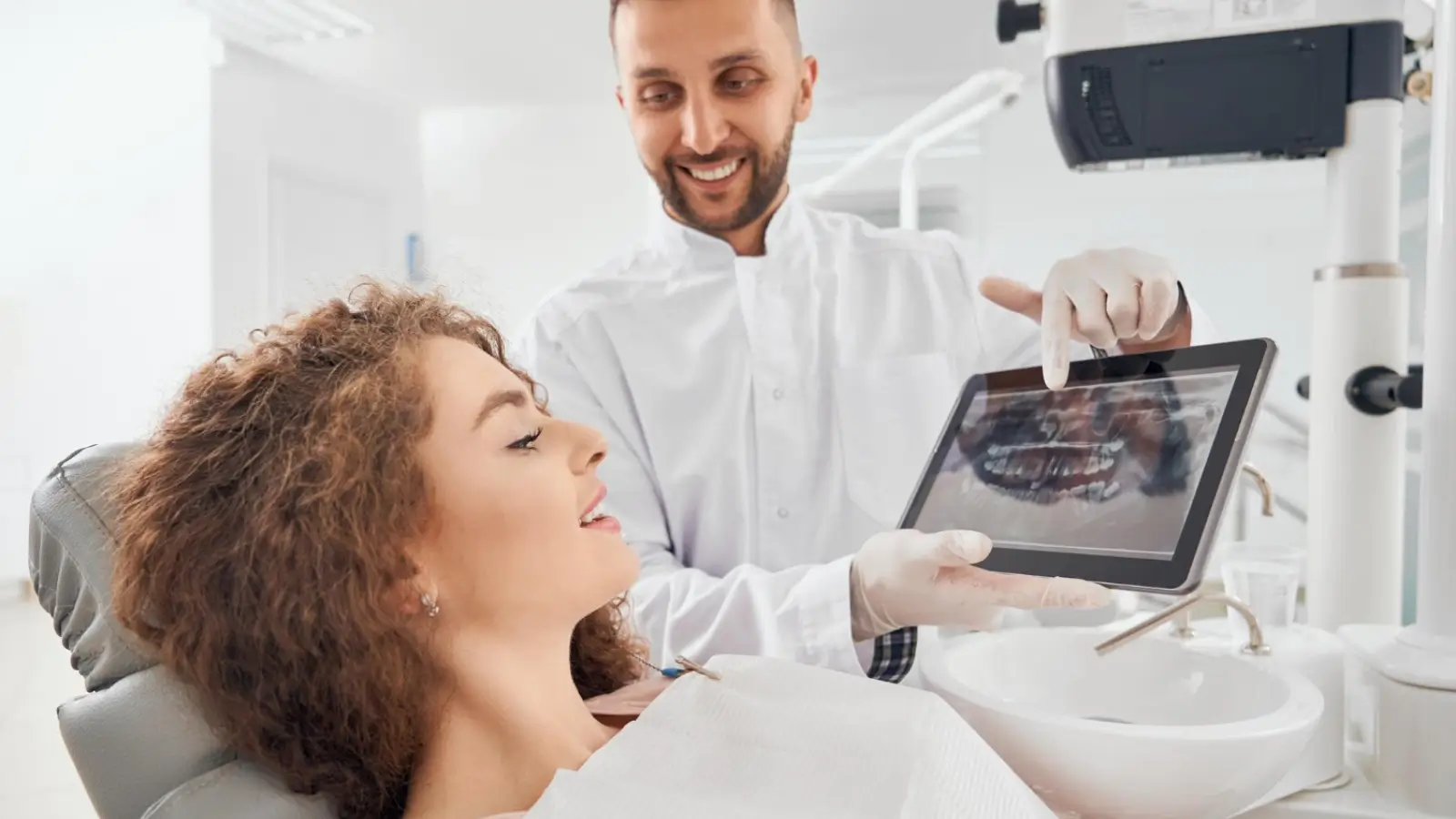


Modern dentistry is defined by innovation, precision, and a growing focus on patient comfort. One of the most transformative advancements in dental technology has been the introduction of intraoral sensors. These compact digital devices have replaced traditional X-ray films, offering clearer images, faster results, and a far more pleasant experience for patients. As dental practices continue to embrace digital dentistry, intraoral sensors have become essential tools that enhance both diagnostic accuracy and overall patient satisfaction.
Before intraoral sensors, dental professionals relied on traditional film X-rays to capture images of a patient’s teeth and jaw. While effective, this process had several drawbacks: long development times, chemical processing, limited image quality, and patient discomfort due to bulky film packets. The transition to digital imaging revolutionized dental diagnostics. With intraoral sensors, dentists can capture high-resolution images instantly, view them on a monitor, and adjust brightness or contrast as needed—all without waiting for film development. This shift not only improves efficiency but also reduces radiation exposure by up to 80%, a benefit that patients appreciate.
Intraoral sensors are small, digital devices that capture detailed images inside the mouth using X-ray radiation. Connected to a computer via a cable or wireless transmitter, they instantly convert X-ray signals into digital images. These sensors are typically covered with a protective sheath and placed comfortably in the patient’s mouth during imaging. Different types of intraoral sensors, such as CCD (Charge-Coupled Device) and CMOS (Complementary Metal-Oxide-Semiconductor), offer varying levels of sensitivity and image quality, but both deliver precise, real-time imaging.
One of the biggest advantages of intraoral sensors is the improvement in patient comfort. Traditional film packets were often thick and rigid, causing discomfort or even triggering gag reflexes during placement. Modern intraoral sensors are thinner, ergonomically designed, and often have rounded edges to fit more naturally in the mouth. Some models even come in multiple sizes to accommodate children or adults with smaller mouths. This thoughtful design helps patients feel more at ease during their dental visits, reducing anxiety and improving overall satisfaction with the experience.
Time is a crucial factor in both patient care and practice efficiency. With intraoral sensors, image capture and display occur within seconds. This immediate feedback allows dentists to evaluate the images in real time and make diagnostic decisions on the spot. Patients no longer have to wait for film to develop, and any necessary retakes can be done immediately. The quick turnaround also helps when explaining conditions to patients, as dentists can point out issues on-screen, fostering clearer communication and trust.
Intraoral sensors provide superior image resolution compared to traditional film, revealing minute details that might otherwise go unnoticed. This clarity helps dentists detect early signs of decay, fractures, bone loss, or other abnormalities more accurately. Since the images are digital, clinicians can zoom in, adjust contrast, or apply filters to highlight specific areas. The ability to enhance and manipulate images contributes significantly to more accurate diagnoses and treatment planning. As a result, patients receive more precise care, often leading to earlier interventions and better outcomes.
Radiation safety is a top concern in medical and dental imaging. One of the major benefits of intraoral sensors is their ability to produce high-quality images with significantly less radiation than conventional X-rays. By using highly sensitive digital sensors, dental practices can lower exposure levels while maintaining diagnostic clarity. This improvement in safety is especially important for children, pregnant women, and patients requiring frequent monitoring. By investing in intraoral sensors, dental offices demonstrate a strong commitment to patient well-being.
Intraoral sensors are not only diagnostic tools—they are also powerful communication aids. When patients can see clear, detailed images of their teeth and gums on a screen, they gain a better understanding of their oral health. Dentists can use these visuals to explain conditions, demonstrate the effects of plaque buildup or decay, and illustrate the need for certain treatments. This transparency helps build trust and encourages patients to take an active role in their care. By improving communication, intraoral sensors foster stronger relationships between patients and providers.
Beyond the clinical advantages, intraoral sensors significantly enhance office efficiency. Since images are stored digitally, they can be easily organized within electronic health records (EHRs), retrieved for future comparisons, or shared with specialists as needed. This eliminates the need for physical storage, reduces paperwork, and accelerates administrative processes. The digital workflow also minimizes the risk of lost or damaged files. In a busy practice, these improvements translate into more streamlined operations, faster turnaround times, and higher productivity—all while maintaining patient satisfaction.
Traditional film-based X-rays required chemical processing, which generated hazardous waste and required special disposal procedures. Intraoral sensors, by contrast, are environmentally friendly since they eliminate the need for film, chemicals, and storage materials. Over time, this not only reduces the environmental footprint but also lowers operating costs. Although the initial investment in digital imaging equipment can be significant, the long-term savings in film, chemicals, and maintenance quickly offset the expense. Many practices also find that the improved efficiency and patient satisfaction lead to greater revenue potential.
Intraoral sensors integrate seamlessly with advanced dental software systems, enabling automated image storage, sharing, and analysis. Many platforms feature built-in diagnostic tools that can detect caries, measure bone levels, or assess endodontic conditions automatically. These integrations streamline diagnostic workflows and allow dentists to provide more comprehensive care. For multi-location practices or specialists collaborating remotely, digital image sharing through secure platforms ensures continuity of care and faster consultations. The combination of intraoral sensors and intelligent software represents a significant leap forward in dental technology.
Today’s patients expect convenience, transparency, and the latest technology when it comes to healthcare. When a dental office invests in modern tools like intraoral sensors, it sends a clear message that patient care and precision are top priorities. The ability to show patients their X-rays instantly, explain findings clearly, and ensure their safety with minimal radiation builds confidence in the practice. Satisfied patients are more likely to return for regular visits and refer friends and family. In this way, intraoral sensors not only enhance clinical outcomes but also contribute to the long-term success of the dental practice.
Preventive care is at the heart of modern dentistry, and intraoral sensors play an essential role in early detection and monitoring. Because these sensors capture highly detailed images, dentists can identify problems before they become serious, allowing for less invasive treatments. For example, early detection of small cavities or bone density changes can prevent more complex procedures down the line. By making early diagnosis easier, intraoral sensors help dentists promote long-term oral health and save patients from unnecessary discomfort and expense.
As technology continues to advance, intraoral sensors are becoming even more sophisticated. Newer generations feature wireless connectivity, greater durability, and improved comfort. Some models use artificial intelligence to assist with automated image analysis, while others integrate with 3D imaging systems for a more complete view of oral structures. These developments promise even greater precision and convenience in dental diagnostics. As these innovations continue, intraoral sensors will remain at the forefront of modern dentistry, setting new standards for care and patient experience.
Intraoral sensors have transformed dentistry by combining comfort, speed, and accuracy in one compact device. They provide high-quality images that enable early and precise diagnoses while minimizing radiation exposure and enhancing communication between dentist and patient. From improved workflow efficiency to better environmental sustainability, the benefits extend beyond clinical outcomes to every aspect of the patient experience. As dental practices continue to evolve, adopting intraoral sensors is not just a technological upgrade—it is a commitment to providing safer, smarter, and more compassionate care.